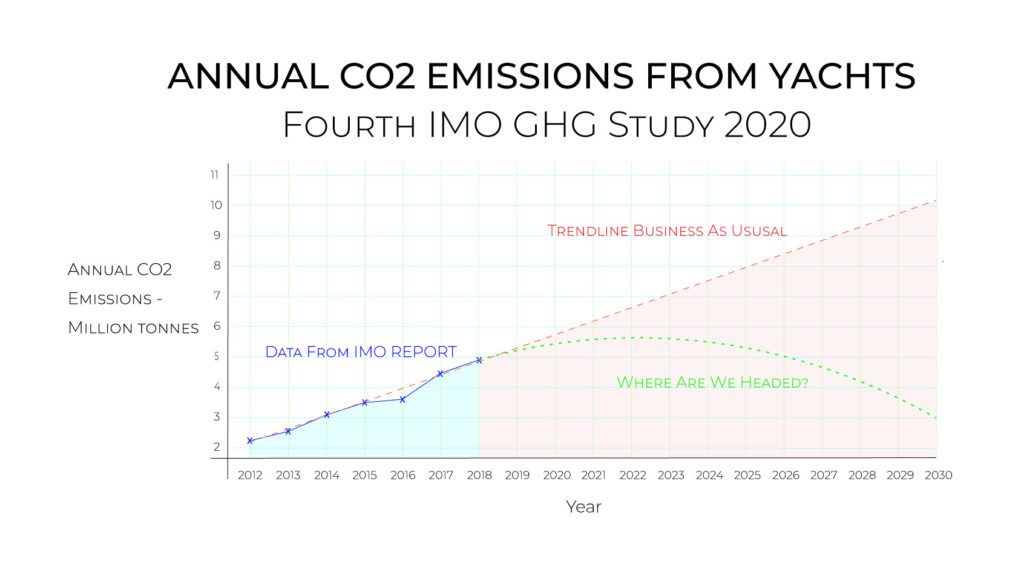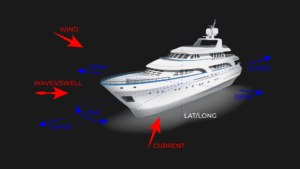People often ask about the GHG emissions from superyachts and the ‘Fourth IMO GHG Study 2020’ provides some indicators for each year from 2012 – 2018 represented in the graphic.
Due to a variety of reasons the data is a little incomplete e.g. Automotive Gas Oil (AGO) and shore-power are not included. This means once AGO and upstream emissions from marina electricity is included, the CO2 emissions could be significantly higher, especially as the data suggests yachts are, on average, at sea only 71 days a year.
The extended trendline suggests that there is a possibility with ‘business as usual’ (BAU) a DOUBLING of CO2 by 2030 compared to 2018.
Fortunately, it does not have to be BAU as there is plenty of technology and operational changes that could help flatten and reverse the trendline. The incentive to make these changes is another matter!
Rather than rely on sources unfamiliar with yachting, it would help if the industry took it upon themselves to gather the data – available from most professional management companies. Emissions and reductions could be measured and validated, and more accurate trendlines projected so that we could demonstrate to the wider World we are working towards reducing CO2 and ensuring the sustainability of our industry.









